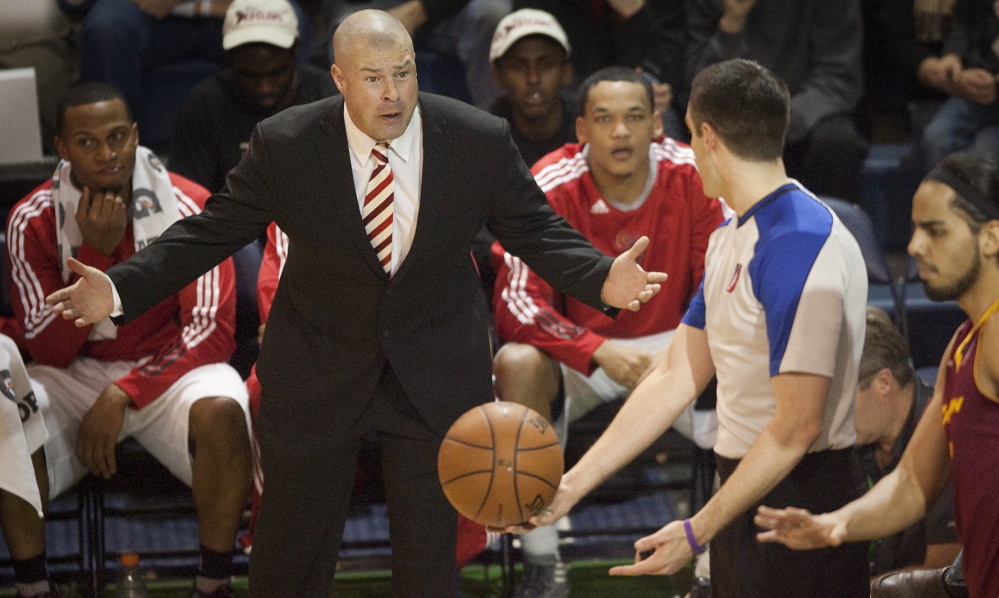WELLS — “It certainly was murder.”
So speaks James Naismith, the inventor of basketball, in a recently discovered 1939 recording in which he reminisces about the first-ever hoop game, played at Springfield College in Massachusetts in 1891. Michael J. Zogry of the University of Kansas found the rare clip among the audio archives of WOR-AM, a New York City-based radio station.
In the clip, Naismith confesses making a “mistake” by not having devised sufficient rules to control the 18 energetic players who took the court for that first game.
Because of that mistake, he notes, the players “began tackling, kicking and punching in the clinches. They ended up in a free-for-all in the middle of the gym floor. I was afraid they’d kill each other. Before I could pull them apart, one boy was knocked out, several of them had black eyes and one had a dislocated shoulder.”
Should Naismith have known better?
TRYING FOR AN ADVANTAGE
My recent book, “Deflated Dreams: Basketball and Politics,” examines the development of the rules of basketball. One axiom of rulemaking appears to have been overlooked or at least not fully appreciated by Naismith: In any endeavor likely to arouse human passions, participants will often stretch the rules to gain an advantage. This is accurate regarding undertakings ranging from political campaigns to sporting events, fantasy or otherwise.
The recently discovered tape of the interview with Naismith also points to his successful early efforts to make the game more refined. Other original rules devised by Naismith, however, also fell victim to the human inclination to seek advantages by stretching the rules. Two of these rules are worth noting.
Naismith’s original out-of-bounds rule had to be revised because players seeking an advantage had stretched the original rule to a dangerous point. The rule originally stated that any time the ball went out of bounds, the first player to retrieve it was entitled to throw it back into play.
Mayhem soon followed. In order to be first to retrieve the ball, players muscled and shoved one another in the often-cramped out-of-bounds area adjacent to the court.
Additionally, balls would often land in the balcony overlooking the playing area, and spirited players would attempt to retrieve the ball by dangerously pushing and pulling each other as they raced up the narrow stairwell leading to the balcony. And, in one of the earlier and crueler versions of “taking one for the team,” stronger players would hoist and throw a scrawny teammate into the balcony in order for him to claim the ball.
ORIGIN OF ‘CAGERS’
Eventually, this problem was lessened by the construction of leather or wire cages that surrounded the court, preventing the ball from going out of bounds. This rule change led to basketball players being referred to as “cagers,” as they still are.
The cages were eventually made obsolete when the rule was changed once again in 1913. The revised rule awarded possession of the ball to the team whose player had not touched it last before it went out of bounds.
One imagines that many scrawny hoopsters with multiple abrasions, knotted heads (if not concussions) and other afflictions from being tossed into balconies rejoiced at the change of this rule, as did their relieved parents.
Naismith soon learned that even those not directly involved in the game could perpetrate stretching the rules to gain an advantage.
Backboards were not noted in Naismith’s original rules, because early baskets were simply attached to the structure or railing of the balcony that circled most courts. Early hoops – initially peach baskets – remained without backboards.
WHY BACKBOARDS WERE NEEDED
This arrangement soon proved unsatisfactory. Trying to stretch the rules of basketball to gain some advantage, passionate fans in the balcony would reach over the railing and, depending on their loyalties – or, perhaps, the point spread – guide or deflect shots heading toward the basket. This problem became so acute that around 1895, a rule change required that the baskets be protected from spectators by a screen at least 6 feet on each side of the goal and at least 6 feet high. This was eventually reduced to the 6-foot-by-4-foot backboard that has become standard.
Naismith should not be faulted for not foreseeing the rule changes his developing game would need over the years. The human capacity for creative stretching of the rules to gain an advantage cannot easily be anticipated. And thanks to that capacity, basketball will likely never become the refined, non-contact sport that Naismith and others might have envisioned.
Still, and thanks to Naismith’s wisdom and flexibility in rulemaking, the game has come a long way from its origins. Today’s basketball can certainly be rough and physical – but at least it ain’t murder.
Send questions/comments to the editors.


